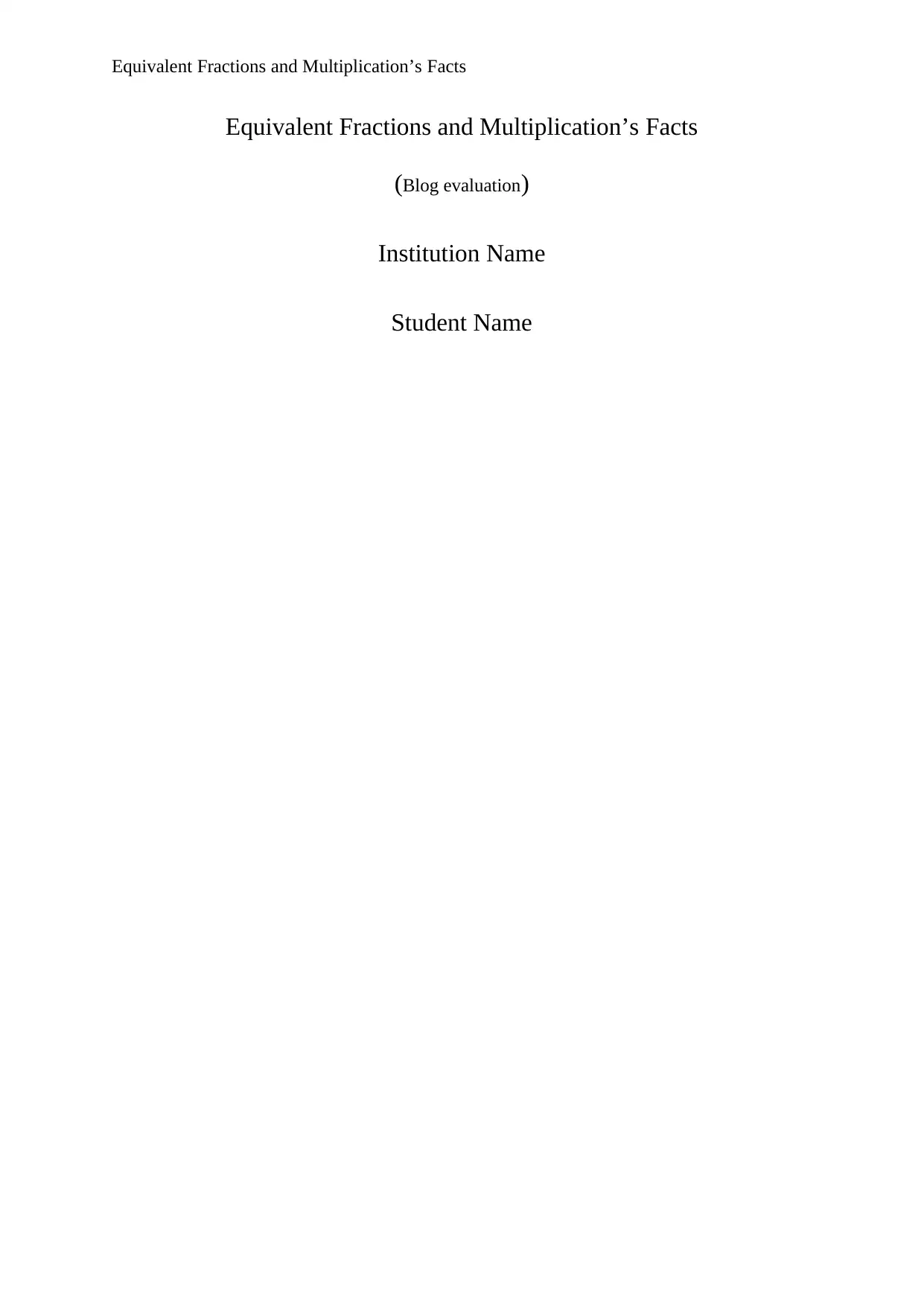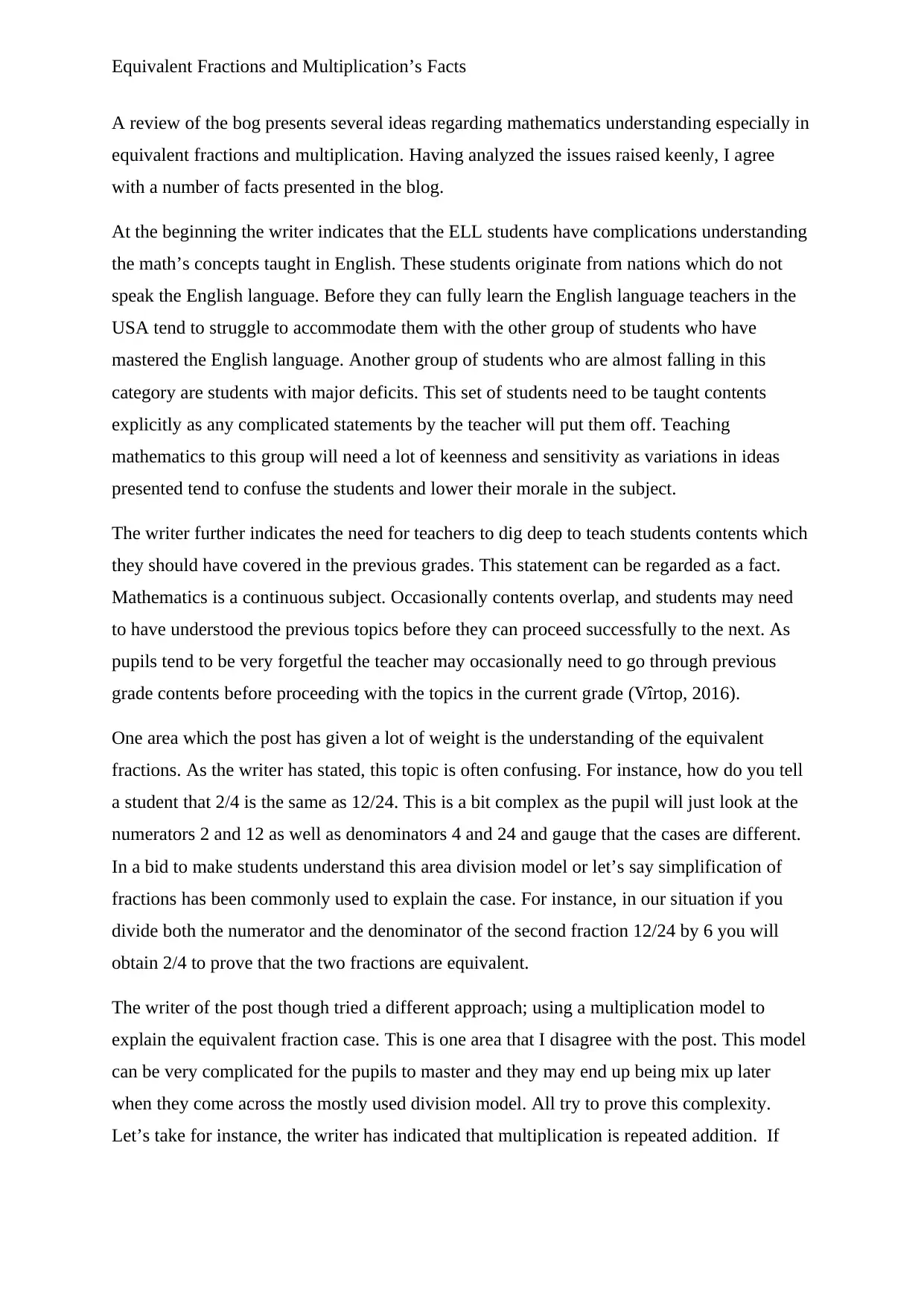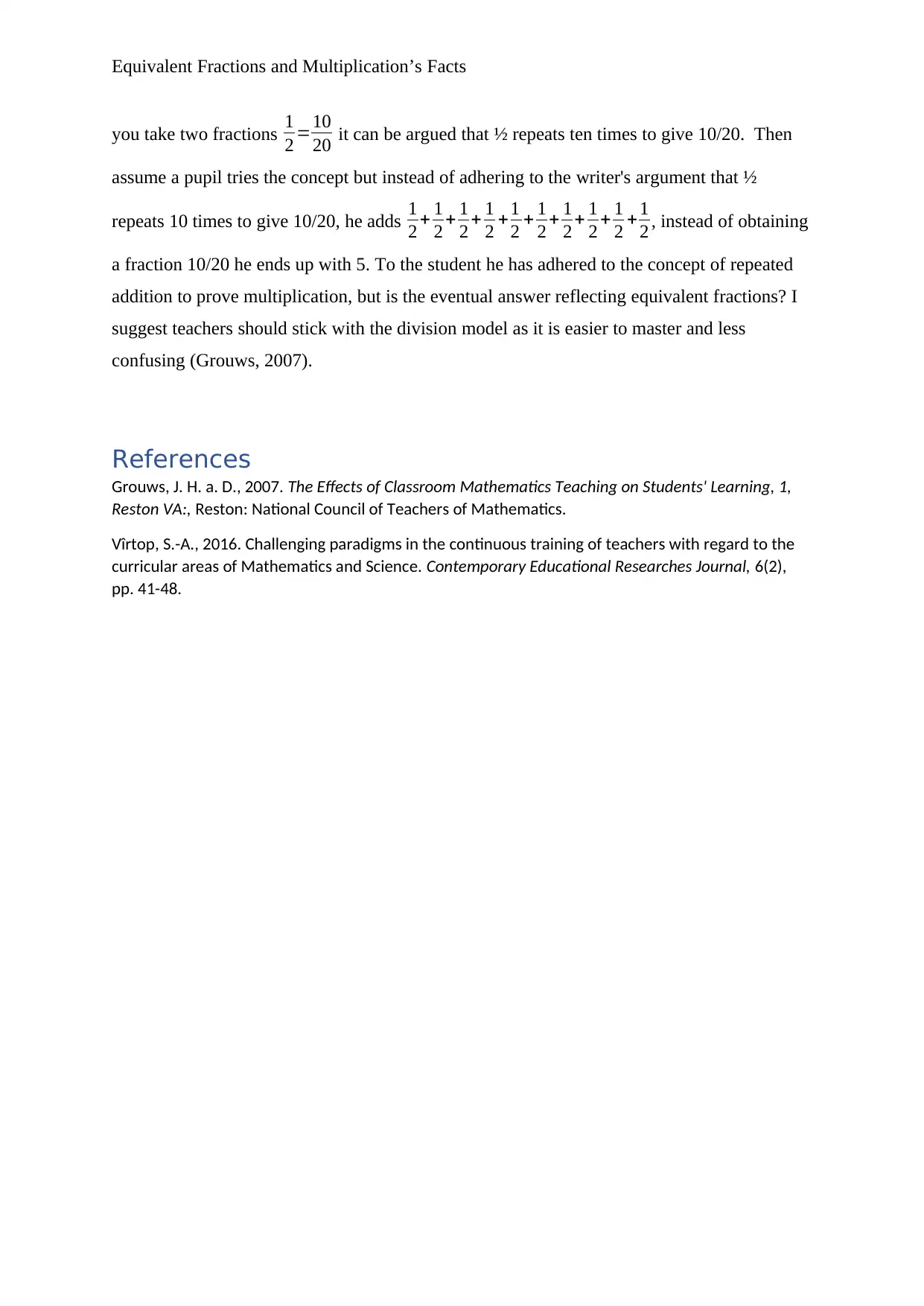Critical Evaluation of Equivalent Fractions and Multiplication
VerifiedAdded on 2023/06/12
|3
|751
|415
Discussion Board Post
AI Summary
This discussion post critically evaluates a blog's ideas on teaching equivalent fractions and multiplication, particularly focusing on the use of multiplication as repeated addition. The author agrees with the blog's points on the challenges faced by ELL students and the need to revisit prior grade content in mathematics. However, the author disagrees with using the multiplication model to explain equivalent fractions, arguing that it can be more confusing for students compared to the division model. The post uses examples to illustrate the potential complexity of the multiplication model and suggests that teachers should primarily use the division model for clarity and ease of understanding. The discussion references research on mathematics teaching and learning to support its arguments.
1 out of 3




![[object Object]](/_next/static/media/star-bottom.7253800d.svg)